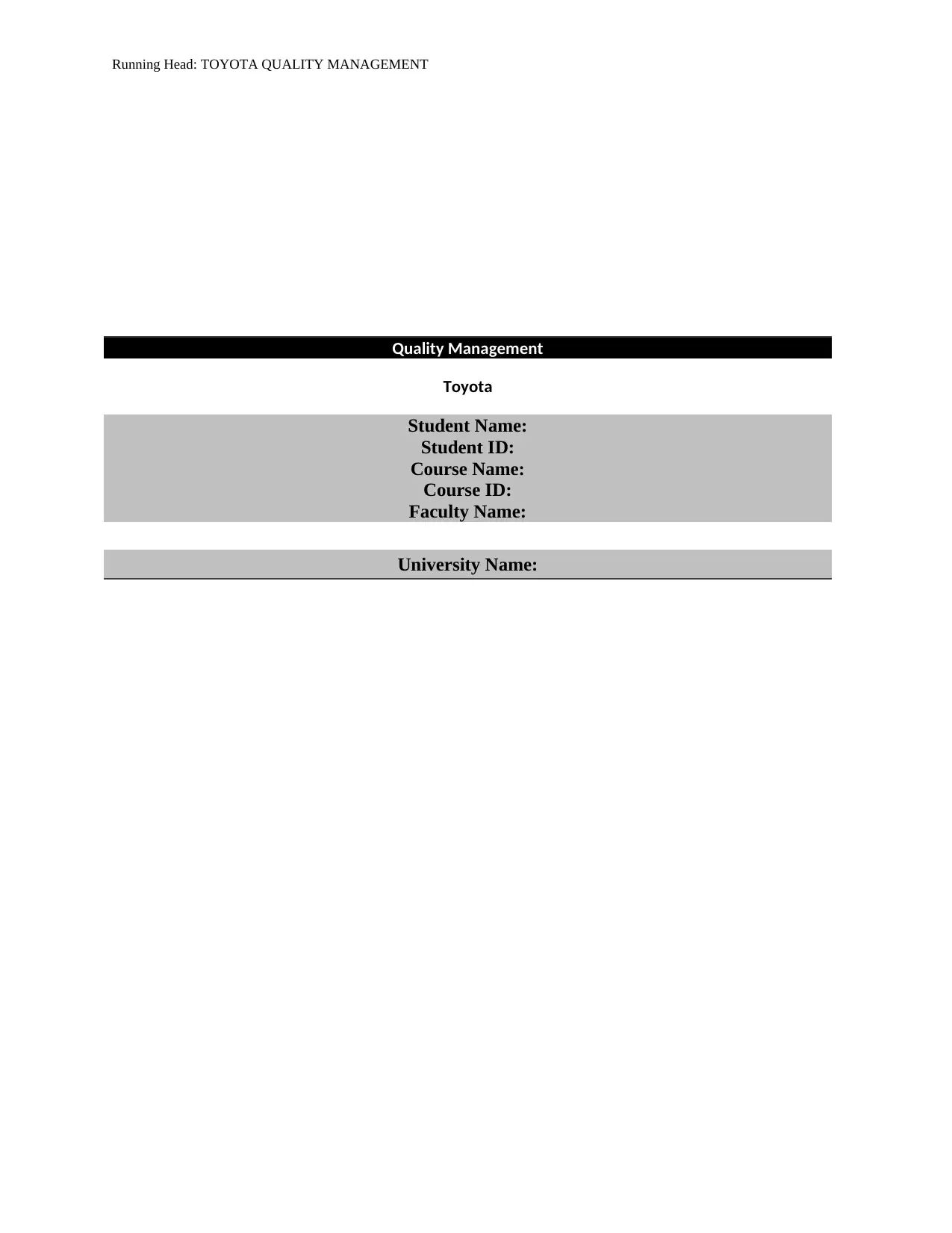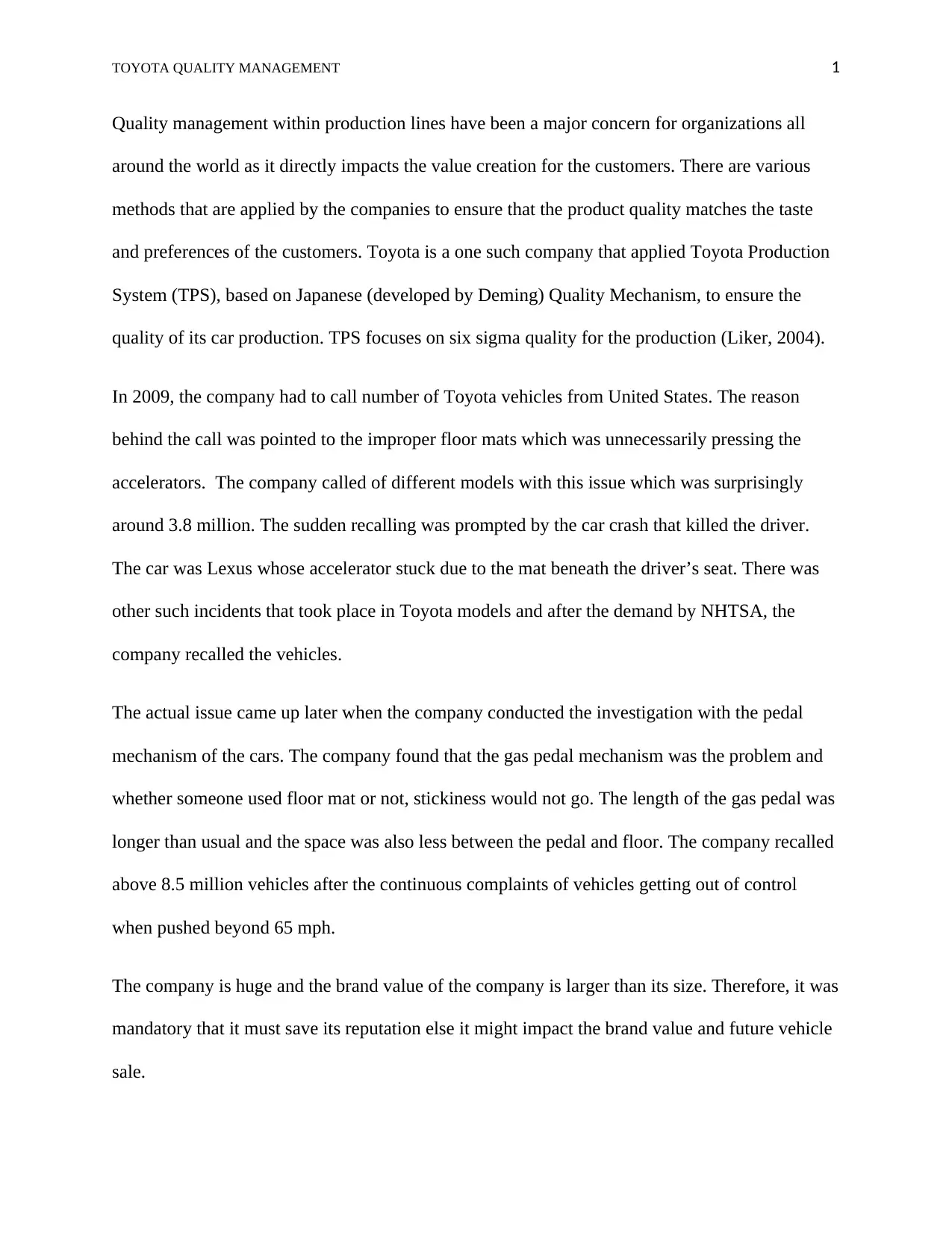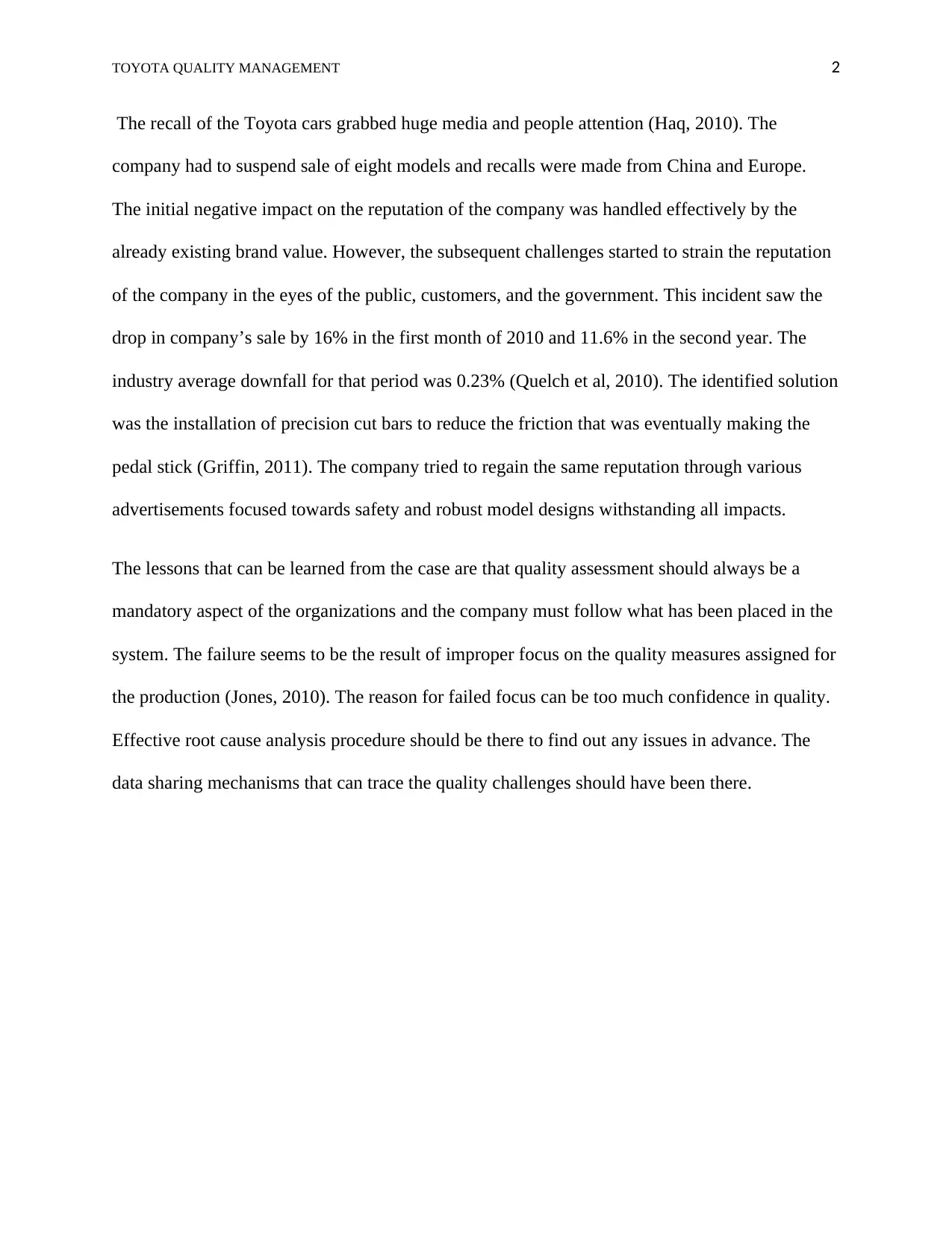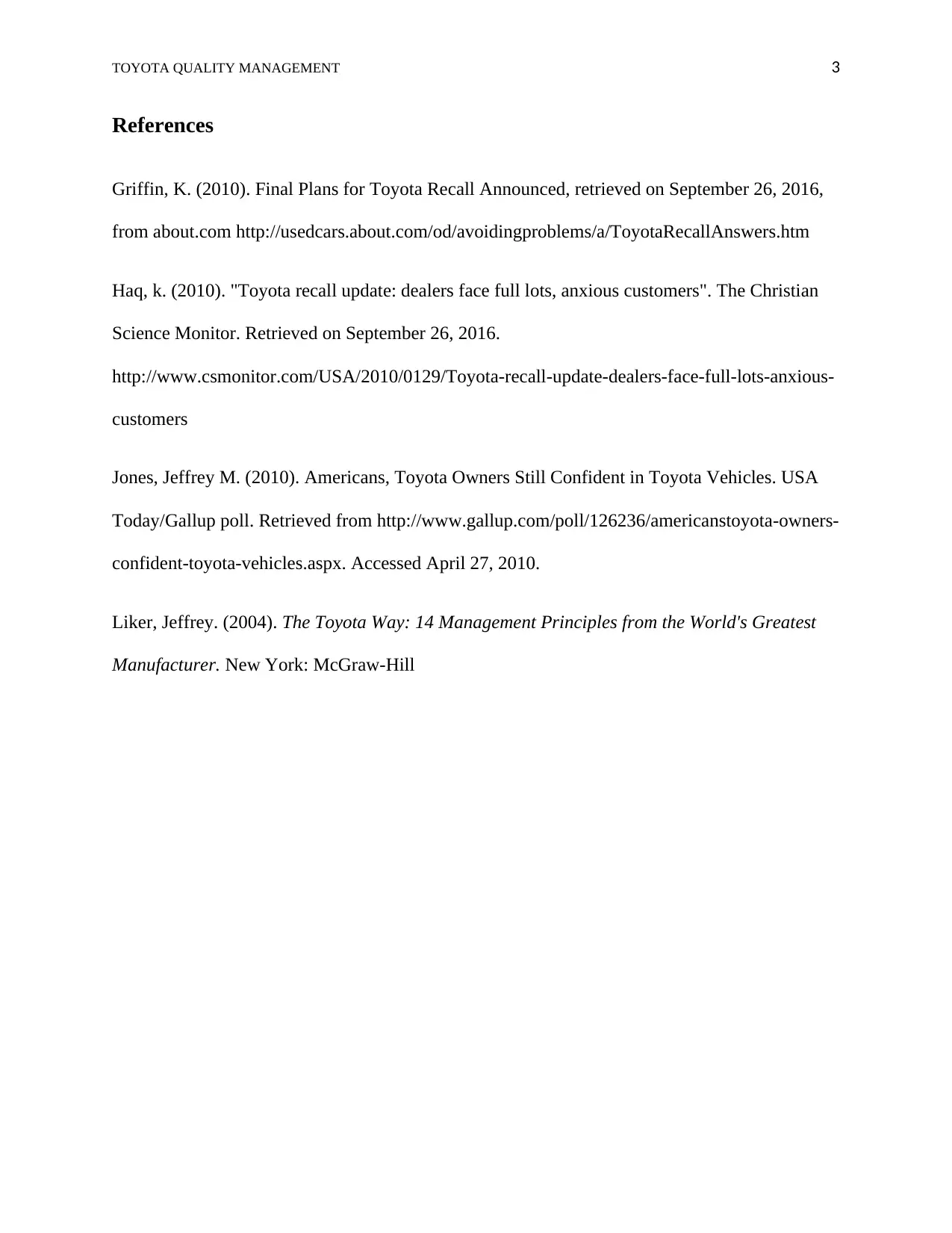University Case Study: Toyota Quality Management and Recall Crisis
VerifiedAdded on 2019/09/21
|4
|771
|472
Case Study
AI Summary
This case study analyzes Toyota's quality management practices, focusing on the 2009-2010 recall crisis. The assignment examines the issues surrounding faulty floor mats and gas pedal mechanisms, which led to millions of vehicles being recalled due to safety concerns and accidents. The study highlights the application of the Toyota Production System (TPS) and its failure in this instance, emphasizing the importance of quality assessment, root cause analysis, and data sharing. The negative impact on Toyota's brand value and sales is discussed, along with the company's efforts to regain consumer trust. The case underscores key lessons about quality control, effective management, and the significance of maintaining a strong brand reputation in the face of production failures. The analysis includes references to relevant literature and news sources, providing a comprehensive overview of the crisis and its implications.
1 out of 4











![[object Object]](/_next/static/media/star-bottom.7253800d.svg)